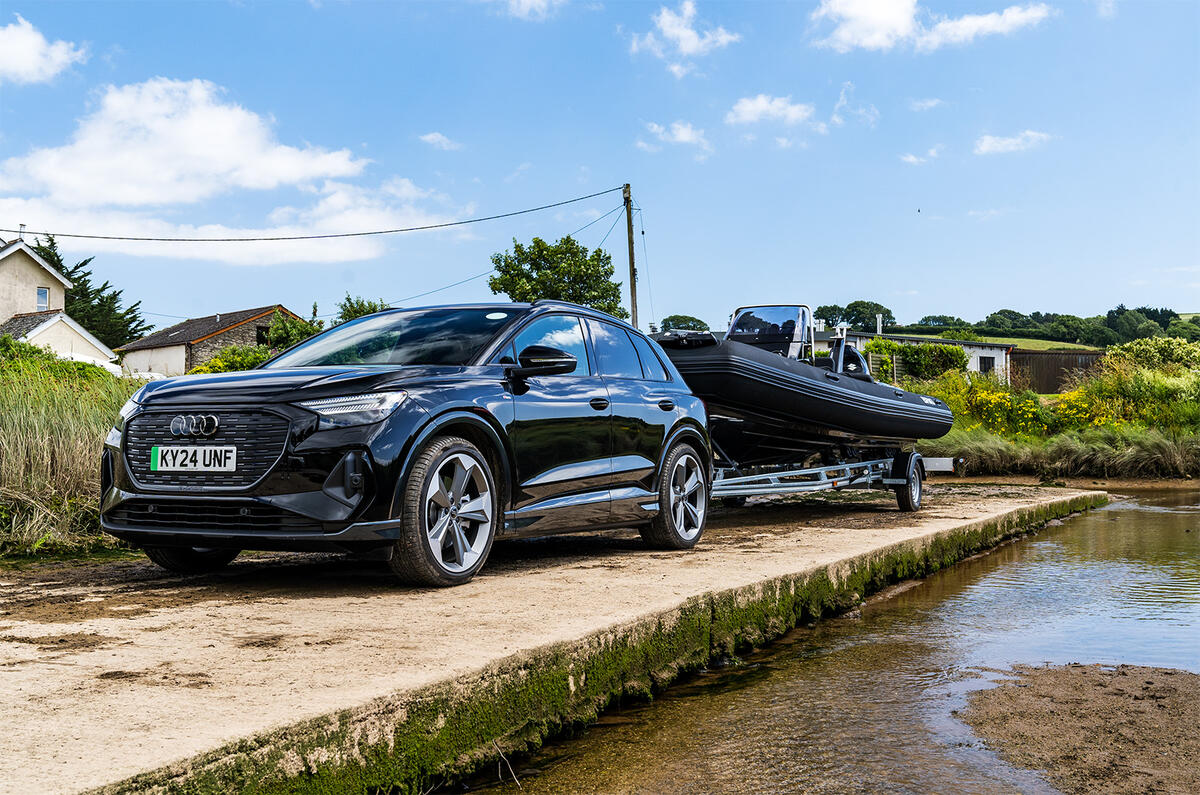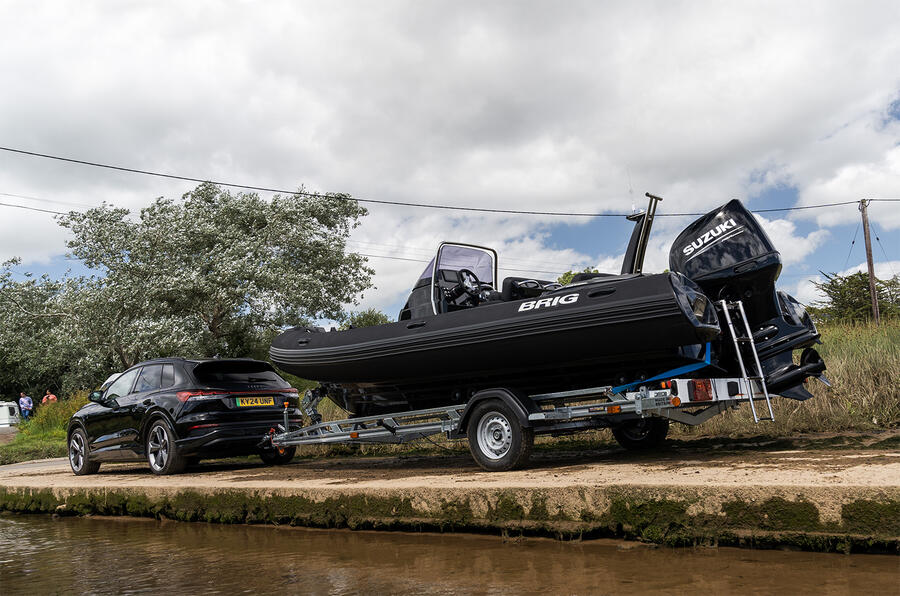Ever listened to a story or an anecdote from a normally reliable friend that you can’t quite believe is completely true? It happens. And it could be that you’ve heard more than a few if you’ve mentioned making the move to an all-electric car.
After all, there are plenty of myths and misconceptions around electric cars that have populated the media. But the fact is, much of this misinformation is outdated, unfounded or easily disproven.
The latest wave of all-electric cars – including the fast-growing range of Audi e-tron models – have been designed to address the big myths on range, charging and running costs. But what about the odd myths; the strange ones? Well, that’s where we’re here to help.
Learn more about the Audi e-tron range
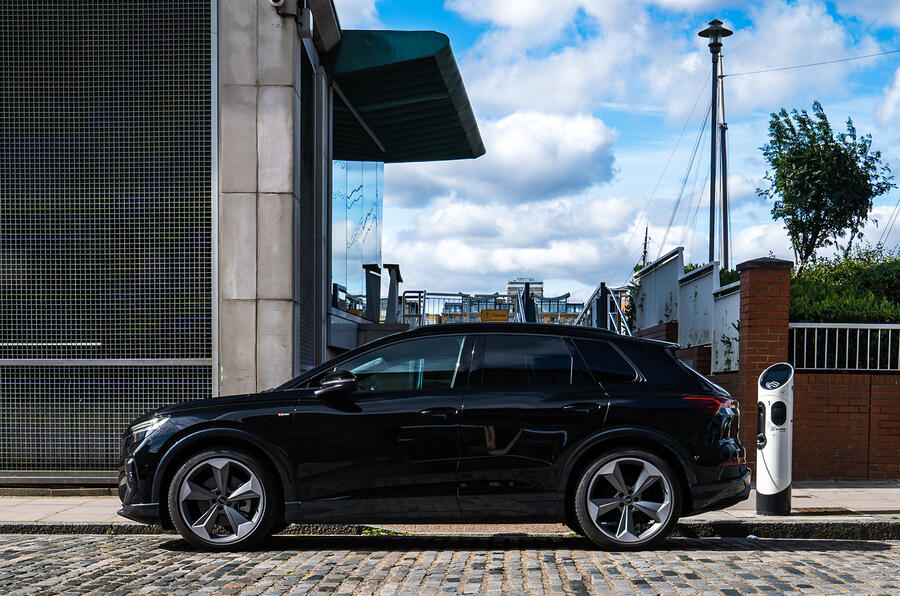
Myth #1: You need a driveway to own and charge an electric car
The top advice from every electric car owner is to charge at home: it’s much cheaper and much more time-efficient than using public charging. But what if you don’t have a house with a driveway? Does that mean you can’t enjoy the benefits of an all-electric car? Worry not. There are plenty of options for those of us who don’t own or rent a property with existing charging capability.
According to zapmap.com, as of April 2024 there were 61,232 public charging points across the UK at 32,697 charging locations.[1] That’s a 45% increase over the previous year, and it’s predicted we’ll reach 100,000 points by August 2025.[2] To put that in another perspective, there are currently just over 1m electric cars on UK roads[3], which means that there is around one charging point for every 17 cars.
The mix of chargers – especially in urban areas – is also favoured towards slower, more cost-effective 8kW to 49kW ‘destination’ chargers, which are located at the sort places where you’d spend a longer extended amount of time – such as city centre car parks, hotel car parks, supermarkets, retail parks and leisure centres. That means you can fit long-stay top-up charging around everyday activities.
But what if you want to charger closer to home or work? Well, if you live or rent a property with a shared car park, you’ll want to find out more about the Electric Vehicle Chargepoint Grant[4], which offers a variety of support for residential charging points.
The On-Street Residential Chargepoint Scheme also helps to support local UK authorities when delivering EV-charging infrastructure for residential areas without off-street parking. Equally, if your employer is looking at encouraging electric car usage, then let them know about the Workplace Charging Scheme.[5]
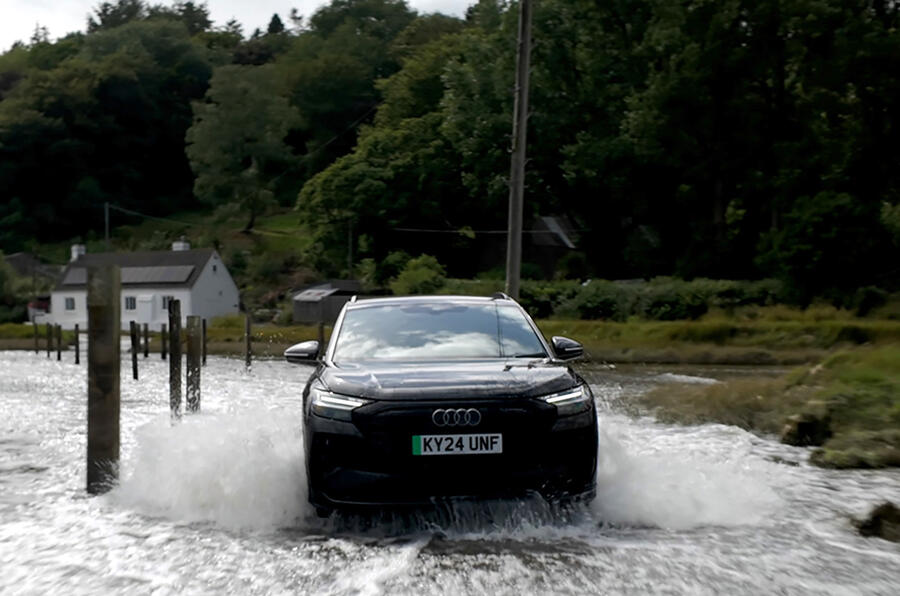
Myth #2: You can't drive an electric car in the rain or get it wet
Whether you’re driving in heavy rain, giving your car a blast with a power hose, putting it through a drive-through car wash or facing a deep puddle, you can be pretty confident when you’re driving a petrol or diesel car that it won’t grind to a halt if it gets wet. It’s the same with an all-electric car like an Audi e-tron.
All the high-voltage components in an all-electric car like an Audi e-tron are sealed deep within the car’s bodywork. And, just like their petrol and diesel brethren, Audi e-tron models are comprehensively tested in real-world winter conditions in the wet and snowy far north of Europe, as well as being laboratory tested in scientifically controlled environment chambers.
Finally, every Audi e-tron model undergoes a comprehensive range of end-of-production-line checks to ensure it’s ready for the worst the weather can throw at it.
Myth #3: You can't charge an electric car when it's raining
With the amount of rain we get in the UK, it won’t surprise you to learn that car makers and charging point manufacturers have taken this into consideration. On-car charging connectors have been designed, engineered and built to tough UK and European standards to withstand and work in a variety of harsh weather conditions, including heavy rain. It’s the same for the charging connectors you find at public charging stations, as well as those installed at home and work for private use.
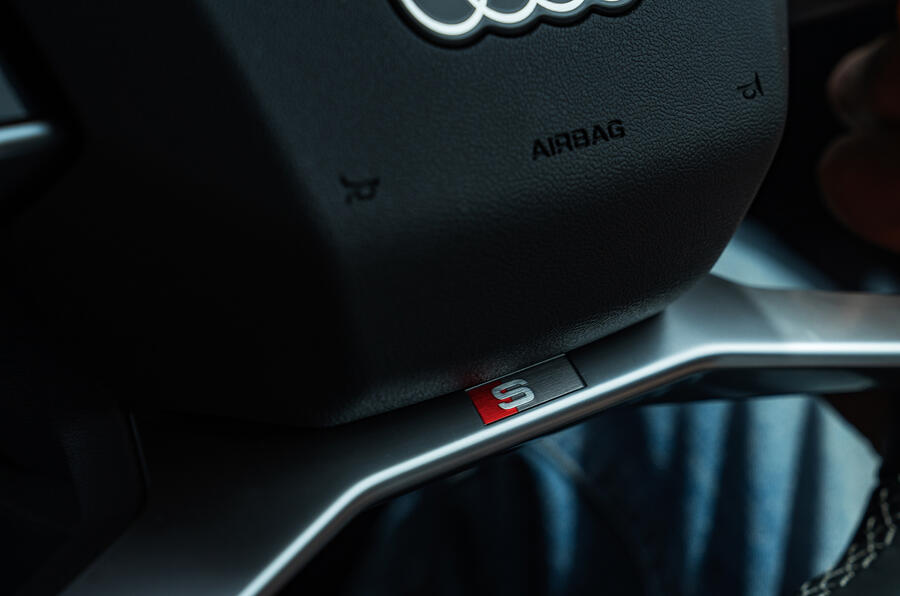
Myth #4: Electric cars aren’t fun to drive
Wrong, wrong, wrong. Electric cars are an absolute joy to drive. First, acceleration. Electric cars don't have a clutch or gearbox, so the electric motors power the wheels directly. That means all of an electric car’s all-electric torque is available instantly. As a result, Audi e-tron models offer confident acceleration.
The high-performance all-wheel drive Audi SQ6 e-tron quattro boasts a combined 490PS as standard from its twin-motor setup. With 275Nm of instantly available all-electric torque from the front motor and 580Nm of torque from the rear motor, you can accelerate from standstill to 62mph in as little as 4.4 seconds.
Then there’s handling. Yes, electric cars are heavier than their petrol and diesel equivalents. But, thanks to the way that the batteries of Audi e-tron models are mounted low down in the chassis, that means a low centre of gravity, while pushing the wheels out to the corners for a long wheelbase that offers stable handling.
Audi’s decades of Vorsprung durch Technik knowledge in delivering great-to-drive petrol and diesel cars has also been applied to its e-tron models. That means advanced suspension, sophisticated electronics and fast-response all-electric quattro all-wheel drive that delivers confidence-inspiring handling.
Myth #5: Electric cars aren’t suitable for motorway driving
First, the always-instantly-available all-electric torque of electric cars isn’t only useful for brisk acceleration from standstill. It’s also perfect for reaching and maintaining A-road and motorway national speed limits, or delivering confident acceleration for an overtaking manoeuvre if the road conditions are appropriate.
The higher speeds of motorways and A-roads – allied to the lack of the regenerative braking energy recapture that you get when driving in cities or on a curving road – means that motorway journeys are less energy efficient. But you still get plenty of range. You can use Audi’s own electric range calculator[6] to predict the range you should get from different Audi e-tron models for your different journey types.
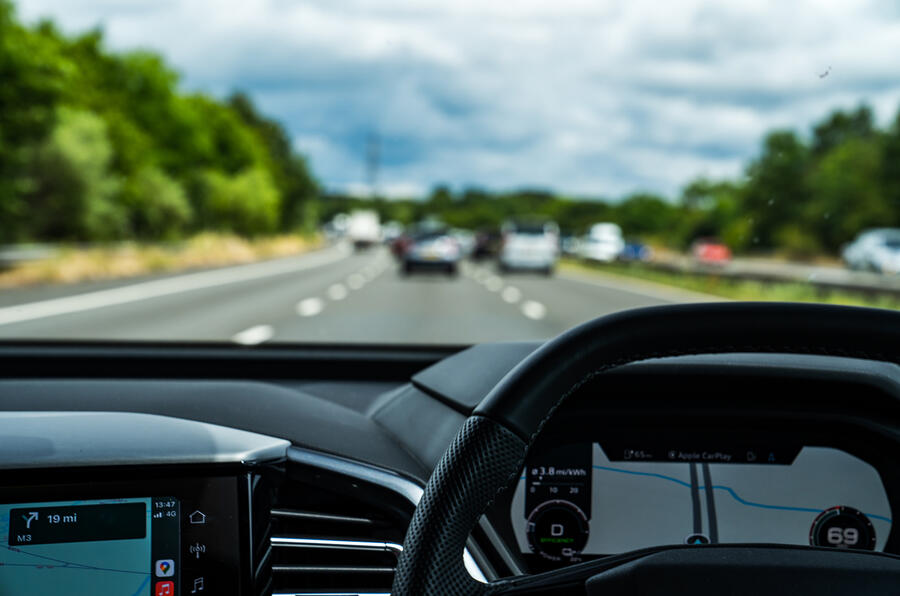
Myth #7: Electric batteries mean less interior space
As we’ve said, the great thing about all-electric models like the Audi e-tron is the fact that the batteries are mounted low down in the chassis. Equally, there’s no transmission tunnel running down the centre of the chassis taking up valuable room.
That means you actually get lots of space inside an all-electric Audi e-tron for people and their luggage. The Audi Q4 e-tron offers luggage capacity from 520 litres as standard to 1,490 litres with the rear seats folded down. The ultra-large Audi Q8 e-tron offers 569 litres of standard, all the way up to 1,637 litres.
Myth #6: You can’t tow a trailer or caravan with an electric car
You’d be surprised just how much an electric car can tow. And, once again, that impressive instantly available all-electric torque is a real boon.
Using the optional tow bar, the Audi Q4 45 e-tron has a braked trailer load limit of 1,200kg on an 8% gradient (or 1,000kg at 12%), and an unbraked limit of 750kg. Even better, the Audi Q8 e-tron 50 quattro has a braked trailer load limit of 1800kg on a 12% gradient using its optional tow bar, with an unbraked limit of 750kg.
You can even spec your all-electric Audi e-tron with a convenient mechanically swivelling trailer hitch, ready for your next adventure.
Myth #6: EV batteries aren’t reliable and lose charge over time
Electric cars use lithium-ion batteries, similar to those in your smartphone or laptop, and they will gradually lose performance and be less capable of carrying full charge as they’re used over time.[7] However, the advanced batteries in an Audi e-tron model have been designed and engineered to help minimise this. That’s why Audi offers an 8-year 100,000-mile electric battery for Audi e-tron models.[7]
You can also help to maintain the performance of your Audi e-tron’s battery in the way in which you charge it. For example, avoid using rapid or ultra-rapid charging too often, and don’t let your battery run to near-empty. You also should avoid completely recharging your battery to 100% unless you really need full range. By keeping your battery charged between 20% to 80% you should help maintain its long-term performance and capacity.
Myth #7: Electric cars can run flat when sitting in traffic
Even the best of us have found ourselves sitting in traffic and worrying that the fuel gauge getting closer to ‘empty’ without a fuel station in sight. Will the same happen with an EV? Will it run flat in the worst traffic jams?
Obviously, if you’re at a low state of charge – and it looks like you’ll be stuck in traffic – then it makes sense to pull out and plan your next charging stop to fit charging around your journey. But if you are truly stuck in a jam, then the power used by the headlights, air-conditioning and infotainment system of your car is minimal compared to the energy used by the electric motors.
Now, with those myths debunked, you should have all the information you would want to make that final decision to make the switch to all-electric car ownership with Audi. There’s just one more thing you need to think about: which e-tron SUV model will you choose to test drive first?
Learn more about the Audi e-tron range
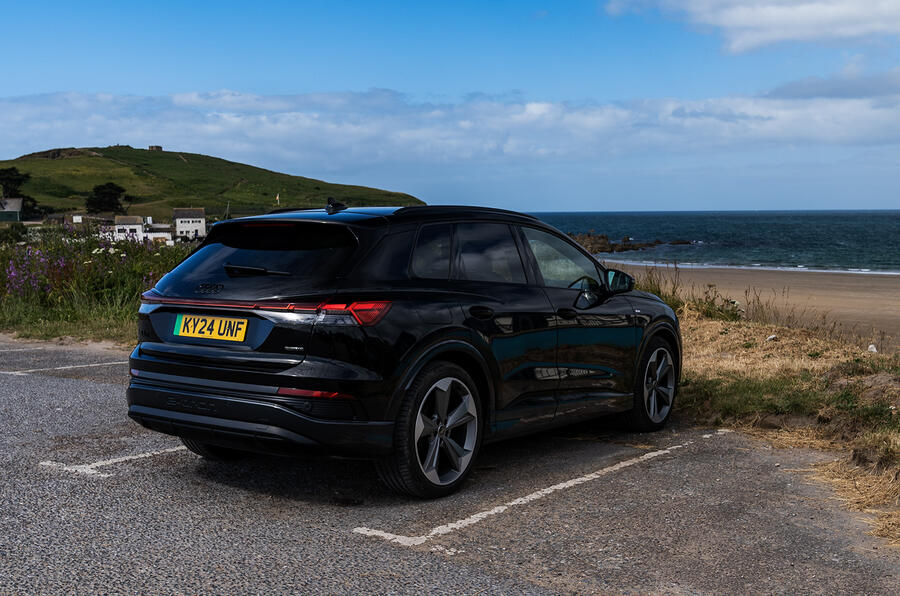
[1] Source: https://www.zap-map.com/ev-stats
[2] Source: https://www.zap-map.com/news/60000-public-charging-points-uk
[3] Source: https://www.rac.co.uk/drive/electric-cars/choosing/road-to-electric
[4] Source: https://www.gov.uk/electric-vehicle-chargepoint-grant-household
[5] Source: https://www.find-government-grants.service.gov.uk/grants/workplace-charging-scheme-2
[6] Source: https://www.audi.co.uk/uk/web/en/electric/range-calculator.html
[7] Lithium-ion batteries, of the type used in most electric vehicles (including Audi e-tron electric vehicles) have a restricted lifespan. Battery capacity will reduce over time, with use and charging. Reduction in battery capacity will affect the performance of the vehicle, including the range achievable, and is one of a number of factors that may impact resale value. For further information on batteries and Audi’s eight-year/100,000-mile new car battery warranty, visit: https://www.audi.co.uk/uk/web/en/electric/faqs/battery.html. Exclusions and warranty terms apply.

